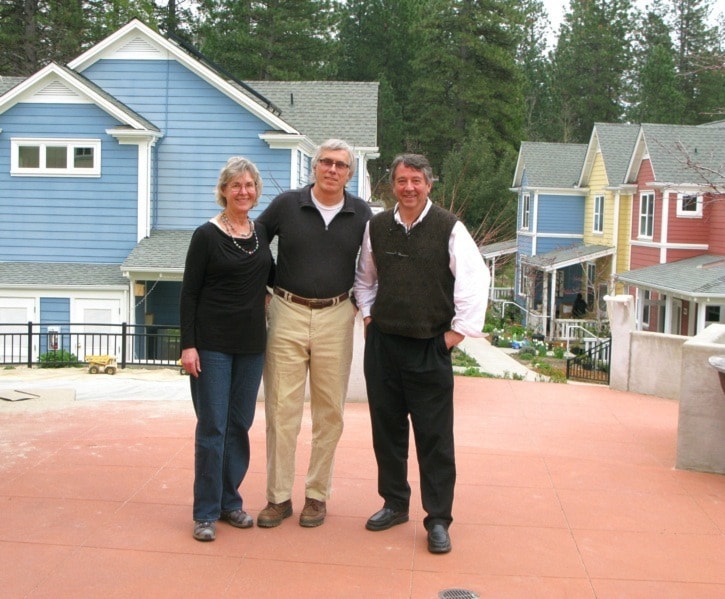Living in a seniors’ home amongst strangers with no real connection to friends and family is not a place many people want to go. Unfortunately that is the scenario for many folks who have neither the resources or the options of living any differently as they age.
Isolation, loneliness, depression and health problems are commonplace for many seniors. As they lose their friends and families due to distance or death seniors often find it hard to cope with no support network around them. It’s not where this generation of seniors see themselves. Today’s seniors are active, involved and healthier than their parents were and they do want to remain in control of their life.
Back in the 1960s and 70s when communes were the utopia and everything seemed possible, many took on that social experiment. Most communes failed for many reasons, one of them being the necessity of earning a living while raising a family, another was the need for privacy.
Today many of those same people, who considered the idea of communal living, are actually getting it together and creating their own community/neighbourhood.
“Our generation is always in control,” says Margaret Critchlow, one of the co-founders of Canadian Senior Cohousing. “We’re doing things differently.”
By differently, Critchlow means “intentional housing,” a system where people live together but not under the same roof.
“Studies have shown that social support makes all the difference, a social connection keeps people going and you don’t get that in nursing homes,” said Critchlow.
“We plan financially and we should be planning socially.”
Critichlow, along with Gail Abernethy and about 30 others have formed Canadian Senior Cohousing, a study group looking at alternative ways of living in a community of their own creation.
She sees this happening in Sooke or the general area in the not-too-distant future. The group wants to start living in intentional neighbourhoods as soon as they find the right property. Each of the members would have their own own home (size dependent on what they can afford) and share a more common space such as a larger main building.
There are many examples across the world, the concept itself began in Europe and has spread to North America. There are now seniors’ cohousing projects all across British Columbia in places like Bowen Island, Courtenay, Victoria, Nelson and the Sunshine Coast. California, Virginia, Colorado and New Mexico also embrace the concept.
“It is not just a ghetto of older people,” said Critchlow. “You start when you are young(er), it’s not an old folks’ place.”
The neighbourhood Critchlow envisions is not cheap. The units would likely sell for about $300-$350,000 and work as a strata with the land, a common house, and gardens. She sees it as being as “green” as possible.
“It’s not a whacko idea,” she said.
It’s also an economical one as studies have shown that people living in such arrangements remain in their own homes eight to 10 years longer. This could potentially save the government approx. $50,000 per year per person.
“If you are looking at 20 units, suddenly that’s a lot of money,” said Critchlow. “Look what it could do for a place like Sooke.”
To accomplish some of their goals, mainly good communication, the group is hosting a 10-week study group.
“Seniors get such a bad rap, we want to be elders and we are redefining what elders are,” she said. “We want to share what we have learned.
The 10-week study group will examine a whole range of issues such as: arriving at a consensus, conflict resolution, the economics of getting older, realities of getting older, co-healing and aging in place and community, the philosophy of aging, and a whole lot of other appropriate topics.
The meetings will be facilitated by Margaret Critchlow and Andrew Moore.
Both have been trained by Charles Durrett, author of The Senior Cohousing Handbook. Critchlow is a anthropologist who has lived in the South Pacific where she learned the value of community and mutual support. Living in an intentional community has been a dream of hers for a long time.
Gail Abernethy is an osteopath and has lived in an intentional community in London.
Andrew Moore is Abernethy’s partner and is an architect as well as a community developer. He currently works with the T’Sou-ke First Nation Band.
“He worked as the manager of a rock band,” said Critchlow, “which may be the most useful skill.”
For now the group is seeking the right property, one where nature takes centre stage, and where it is easy to get to services.
“We are giving a lot of thought to this, we’re going very carefully and our eyes are open on this,” Critchlow stated.
For more information on the 10-week study group Active Aging in Community, email: seniorcohousing@gmail.com or check out the website at: www.seniorcohousing.ca.
